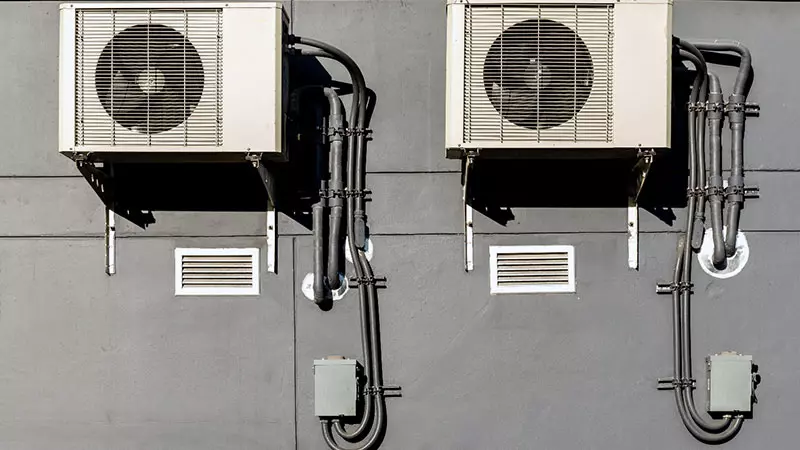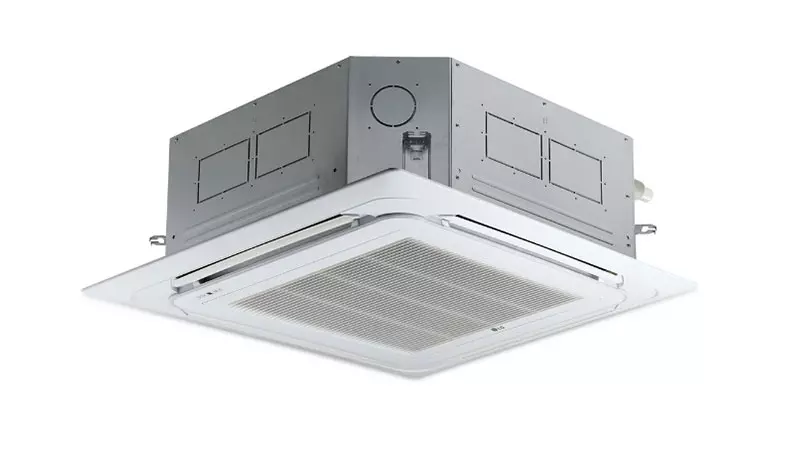 Image Source: Sanaulac.vn
Image Source: Sanaulac.vn
Air conditioning is a crucial consideration when it comes to residential or commercial buildings. Whether you're renovating your home or planning your dream house, choosing between a ductless system and a ducted one can be a daunting task. In this guide, we'll cover the basics of both systems, along with their advantages and disadvantages. By the end, you'll be able to make an informed decision about which system is best for your needs.
Ducted Air Conditioning Systems
As the name suggests, ducted air conditioning provides heating or cooling through a system of ducts spread out all over your home or commercial space. A central unit, including a condenser, compressor, and an air handling unit, is usually located in the basement, attic, or garage. It provides cool or hot air, which is then distributed throughout the building via a series of ducts and vents, ensuring the appropriate climate control.
Types of Ducted Air Conditioning Systems
Ducted systems can be broadly categorized into two types: split central air conditioners and packaged central air conditioners.
Split Central Air Conditioners

Split central air conditioners are the most common type of central air conditioning system in use today. They consist of an outdoor condenser and compressor unit housed in a metal cabinet, and an indoor evaporator unit usually located in a closet or attic. The outdoor unit supplies refrigerant to the indoor unit, which cools the air and distributes it through a network of ducts via an air handling unit. Split systems are an economical choice for homes that already have a furnace but no air conditioner as they can use the same furnace ductwork.
Packaged Central Air Conditioners

In a packaged central air conditioner, all components, including the condenser, compressor, and evaporator, are housed in a single unit. This unit can be installed on a concrete slab next to your house or on the roof. Packaged central air conditioning systems generally have lower efficiencies than split systems but have the advantage of not taking up any space inside your home. However, it's essential to check the suitability of your outdoor space before opting for a packaged central system, considering its weight and installation requirements.
Types of Ducts for Ducted Heating or Cooling
Ducting is an essential component of central air conditioning systems. Two types of ducts are commonly used: flexible ducting and rigid ducting.
1. Flexible Ducting

Flexible ducting consists of a metal framework surrounded by flexible plastic and insulation. It is cheaper and easier to install, making it suitable for confined spaces where rigid structures are challenging to implement. However, it's crucial to ensure there are no kinks or bends in flexible ducting, as they can hamper airflow.
2. Rigid Ducting

Rigid ducting is made of metal, making it sturdier and more durable than flexible ducts. However, it is harder to install and tends to be noisier due to its ability to carry sound better. Fiberglass insulation can be used to reduce noise, but it poses potential health hazards if deteriorating or old.
Pros and Cons of Ducted Air Conditioning
Here are the pros and cons of ducted air conditioning systems:
Pros:
- Most homes built in the US since 2000 already have central ducts, reducing installation costs.
- Ducts provide an unobtrusive and discrete outlook.
- Removes humidity more efficiently, making it ideal for humid environments.
- Enhanced airflow in large rooms with many people.
Cons:
- Higher installation costs, especially for retrofitting existing properties.
- Leaks or damages to ducts can reduce system efficiency.
- Maintenance-intensive, with regular upkeep and monitoring required.
- Potential for mold and contaminants in ducts.
Ductless Air Conditioning Systems

Ductless air conditioning systems eliminate the need for ductwork by blowing cooled air directly into the living space, making them highly efficient. These systems consist of an outdoor unit and an indoor air-handling unit with an evaporator coil and fan. A copper conduit links the outdoor and indoor units, housing the power cable, condensate drain, refrigerant tubing, and suction tubing.
Types of Ductless Air Conditioning Systems
Ductless air conditioners come in various types, including wall-mounted mini-splits, window units, portable air conditioners, ducted mini-splits, floor-mounted mini-splits, and cassette type air conditioners.
Wall Mounted Mini Splits

Wall-mounted mini-splits are easy to install and provide individualized temperature control for each room. They can work as reversible heat pumps, providing heating during winter months.
Window Units

Window units combine the evaporator and condenser in one housing and are installed in a window. They are suitable for cooling individual rooms.
Portable Air Conditioners

Portable air conditioners are compact and can be moved around easily. They have a hose for venting hot air outside.
Ducted Mini-Splits
Ducted mini-splits connect to ducts to provide heated or cooled air throughout a space. The ducts are barely visible, maintaining the aesthetic of the room.
Floor Mounted Mini-Splits
Floor-mounted mini-splits are ideal for rooms with low ceilings or slanted walls, as well as rooms with limited wall space due to large windows.
Cassette Type Air Conditioners

Cassette air conditioners are recessed within ceilings and provide ample airflow through multiple openings. They are suitable for larger rooms.
Pros and Cons of Ductless Air Conditioning
Here are the pros and cons of ductless air conditioning systems:
Pros:
- Compact and leave a small footprint.
- Individual temperature control for each room.
- Energy-efficient with potential utility rebates.
- Better air quality due to the absence of ducts.
- Inverter technology reduces energy usage.
Cons:
- Requires indoor units that can be obtrusive.
- Higher initial installation costs.
- Limited airflow, not suitable for large spaces.
- Maintenance required for each unit.
When Should You Opt For Ducted Air Conditioning?
Consider choosing ducted air conditioning if:
- Your space already has existing ductwork.
- You live in a humid climate.
- You need improved airflow.
- You want a discreet solution that doesn't disrupt your home's aesthetic.
- You prefer a low-maintenance system.
When Should You Opt For Ductless Air Conditioning?
Consider choosing ductless air conditioning if:
- Your space doesn't have room for ducts.
- You're adding cooling/heating to an existing space.
- You want to avoid dust in your living space.
- You want multiple zone temperature control.
Going for Both Ducted and Ductless Systems
Another option is to opt for both ducted and ductless cooling systems. This allows you to benefit from the advantages of both systems. It's particularly useful for adding air conditioning to additional rooms or resolving hot and cold spots in your home. Zoning and integrated controls offer flexibility with a combination of ducted and ductless systems.
Ducted vs. Ductless Air Conditioning: Which Is Better?
There is no one-size-fits-all answer to this question. The choice between a ducted air conditioner and a ductless one depends on your specific needs and considerations. Factors to consider include whether the property is already built, the area of the space, your budget, and the desired level of control. Answering these questions will help you make an informed decision. Remember, the ultimate goal is comfort, efficiency, and convenience. Happy hunting!

















